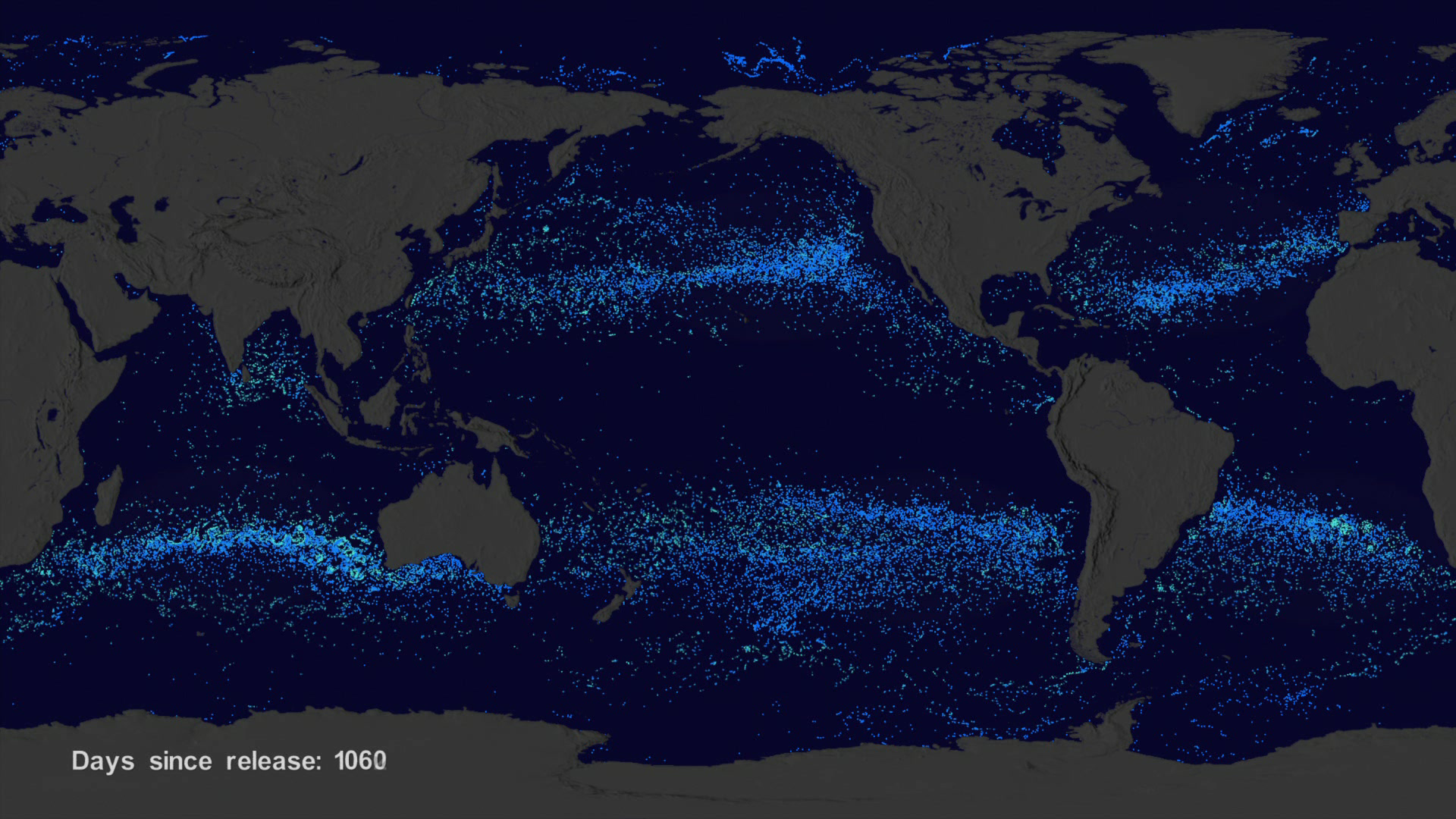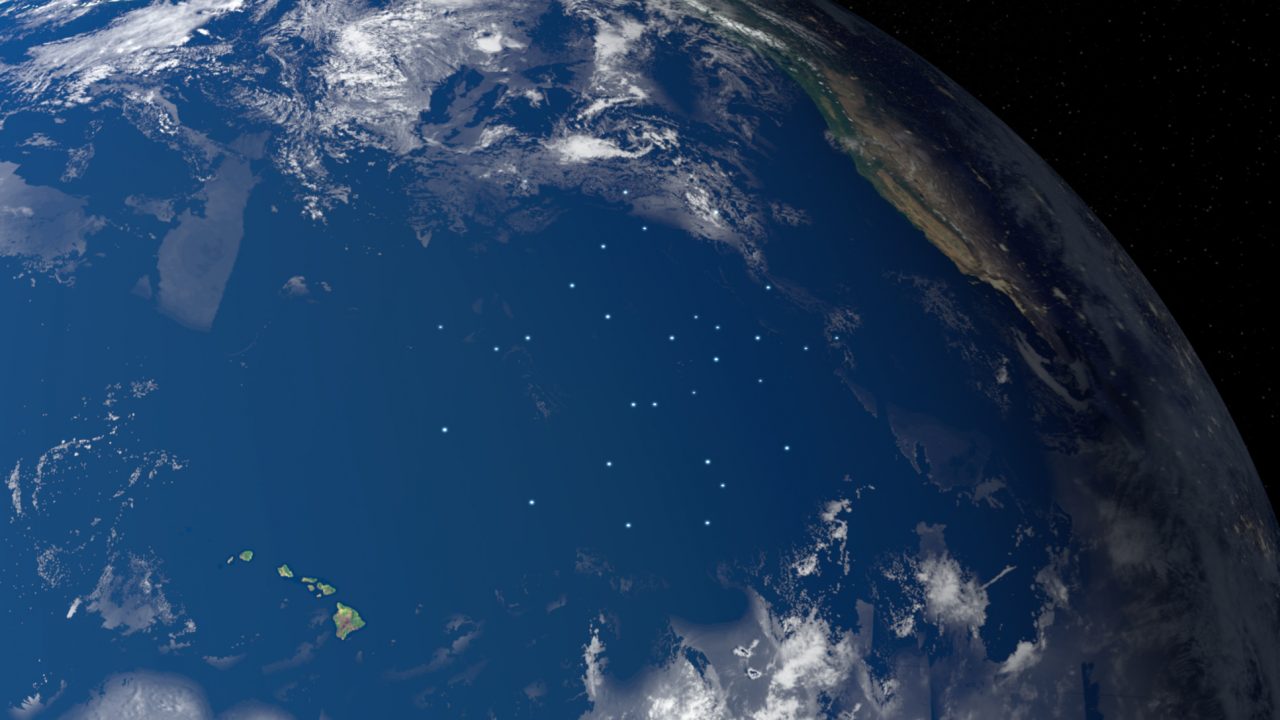
With few environmental controls and regulations, a lot of it ends up in the rivers, and then the oceans. Rich countries ship plastic waste to poor countries to be separated and sorted. And "recycling" is probably a big contributor to the plastic ocean pollution. The further you go down that rabbit hole, the worse it gets. They melt at a huge range of temperatures, cannot be mixed for reuse, have tons of additives for individual applications, and are easily contaminated with labels and residue. This is a come on by the plastics industry to shift blame for plastic waste onto the consumer. But some of the solutions we come up with to deal with plastic waste make me want to cry.

As for what is done to the plastic after it's caught, they don't say. The net moves much slower than a fishing net so the fish are able to escape easily. Most are returned to the ocean, but many are caught because they are sick or dying. Good questions, If you watch the second video (not the first, it's just fluff), you'll find about 2% of the stuff caught is fish. This waste is then pulled up onto support vessels and taken back to shore. These new U-shaped barriers will measure 2,500 m (8,200 ft) long and will be towed by boats, using a 4-m-deep (13-ft) skirt to funnel plastic waste from the surface into a collection chamber. It is currently in the midst of transitioning from the System 002 barrier used in that early operational mission to a much larger System 003. Its plans involve deploying these in the Great Pacific Garbage Patch to gather up plastic debris, and last year proved the viability of this approach with a massive haul. The animation shows massive trash-collection barriers sweeping through the Great Pacific Garbage Patch with great efficiency, with the company envisioning 10 of these systems would be enough to put a serious dent in the problem.Īfter first introducing the idea back in 2013, The Ocean Cleanup team has developed and tested various iterations of its giant trash-collecting barriers. Many individuals and international organizations, however, are dedicated to research and develop innovative solutions to clean up the GPGP.The Ocean Cleanup has a huge task on its hands in ridding the seas of plastic waste, but a sleek new video offers a compelling look at its latest plan of attack. Charles Moore says cleaning up the garbage patch would “bankrupt any country” that will try it. While oceanographers and climatologists predicted the existence of the GPGP back in the ‘60, it was a racing boat captain by the name of Charles Moore who actually discovered the trash vortex in the mid ‘70.īecause the GPGP is so far from any country’s coastline, no nation will take responsibility or provide the funding to clean it up. Oceanographers and ecologists recently discovered that about 70% of marine debris actually sinks to the bottom of the ocean. The seafloor beneath the GPGP may also be an underwater trash heap. The microplastics of the GPGP can simply make the water look like a cloudy soup which, sometimes, is intermixed with larger items, such as fishing gear. Even satellite imagery doesn’t show a giant patch of garbage. Microplastics can’t always be seen by the naked eye. In reality, these patches are almost entirely made up of tiny bits of plastic, called microplastics.


Denser debris can sink centimeters or even several meters beneath the surface, making the vortex’s area nearly impossible to measure.įor many people, the idea of a “garbage patch” conjures up images of an island of trash floating on the ocean. In addition, not all trash floats on the surface. The North Pacific Subtropical Gyre is too large for scientists to trawl. No one knows how much debris makes up the GPGP. Many plastics, for instance, do not wear down they simply break into tinier and tinier pieces.

The amount of debris in the GPGP accumulates because much of it is not biodegradable. The patch is actually comprised of the Western Garbage Patch, located near Japan, and the Eastern Garbage Patch, located between the U.S. It is also known as the Pacific trash vortex and spans waters from the West Coast of North America to Japan. The Great Pacific Garbage Patch is a collection of marine debris in the North Pacific Ocean.


 0 kommentar(er)
0 kommentar(er)
